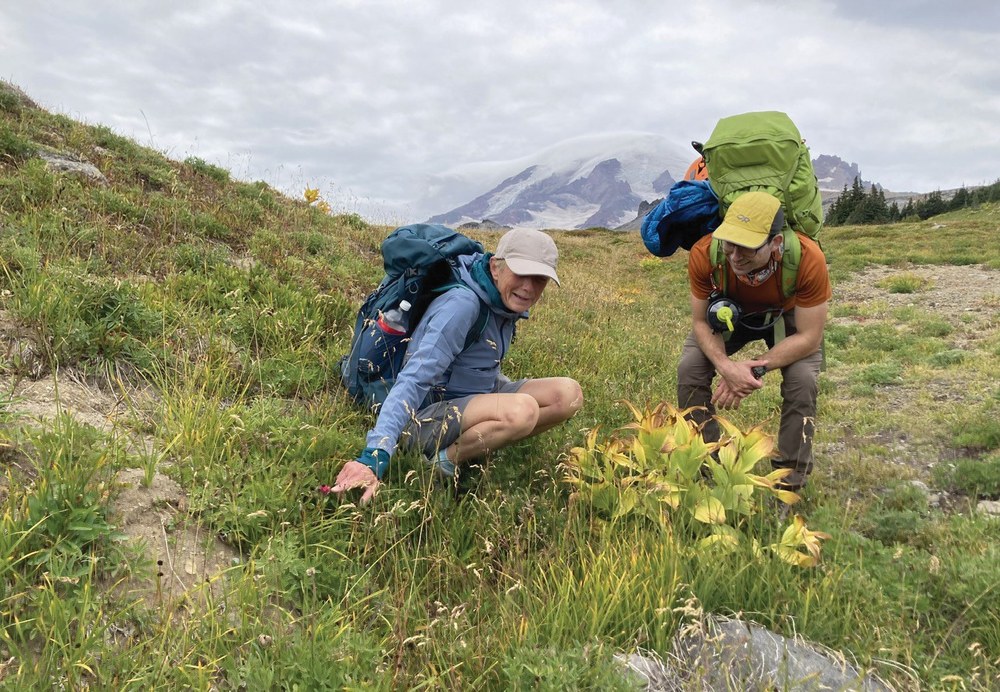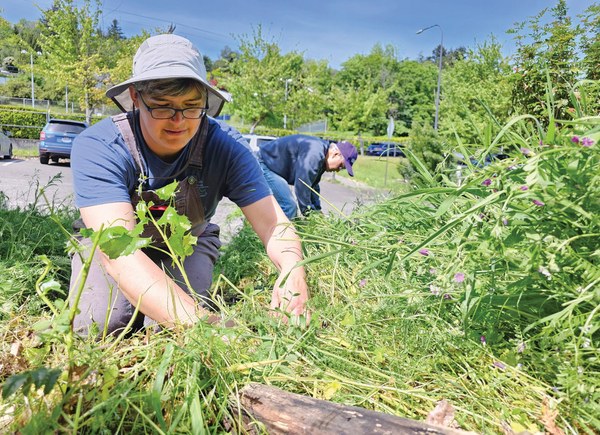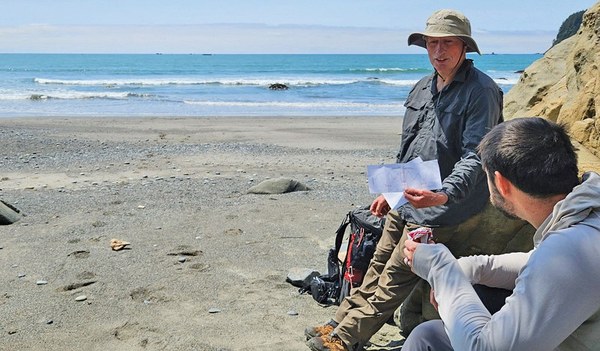
While The Mountaineers has proudly championed outdoor education, mindful recreation, conservation, and environmental advocacy for nearly 120 years, I often have to remind myself that we only became a 501(c)(3) 13 years ago. This was a pivotal moment because it provided a new opportunity to build partnerships with financial donors and safeguard the future of our organization. While our tax status may have changed, community remains at the heart of everything we do.
Our ability to accept donations directly contributed to our growth, guiding us from an operating budget of $5.8 million in fiscal year 2011 to $11.8 million of mission impact today. In that time, we’ve increased membership from under 10,000 to over 16,000 and grown our volunteers from 1,000 to over 3,200. Giving back is intrinsic to our community. The readiness of Mountaineers to pay it forward plays a key role in our success as a fundraising organization. Resources received through philanthropy allow us to introduce people to the outdoors, improve accessibility through scholarships, grow our youth programs, bolster volunteer leadership development, invest in infrastructure to improve programming, increase conservation and advocacy education, allow sustainable choices for books production, and so much more.
I’m often asked what it takes to build a successful giving program. I could spend days describing the “how-to” and “where-to” of giving adventures, but ultimately, the answer lies in cultivating a strong culture of philanthropy.
What is a culture of philanthropy?
An organization with a strong philanthropy culture is one where everyone understands the value of the mission and the importance of philanthropic giving, and knows how to get involved. Our members, volunteers, staff, Board leadership, and community partners all have a role to play in amplifying our impact. And while fundraising is one major puzzle piece of a thriving organization, there are many impactful ways we can each support our organization’s resilience and growth.
A fun way to think about the various opportunities to help us achieve our mission is the five T’s of giving back: time, talent, treasure, testimony, and ties. We’ve been able to grow because we benefit from a unique culture of philanthropy that speaks to peoples' interests and passions. Having various ways to plug in helps members feel more connected to our mission because they can choose to engage in a way that’s personally meaningful.
 Stewarding the Seattle Program Center. Photo by Mckenzie
Stewarding the Seattle Program Center. Photo by Mckenzie
Campbell Davies.
Time
Giving back through the gift of time is where it all started for The Mountaineers, and today “volunteerism” is codified as one of our five core values. Volunteers are the cornerstone of our community and their ability to mobilize behind a passion or a cause is one of our greatest strengths. This past year, our community recorded a whopping 169,012 volunteer hours!
There are many ways to contribute to The Mountaineers as a volunteer, such as getting involved in course planning and committees. To signal what kind of volunteering you’re interested in, update your volunteer profile on our website so we can attempt to match your talents with opportunities for engagement.
Talent
Many individuals take volunteering to the next level, like serving as a contributing author to Mountaineering: The Freedom of the Hills, helping us apply for permits for a lodge renovation, sitting on a panel to support climate change initiatives, or leading a workshop to teach crevasse rescue. Offering your unique skills and abilities to help our organization achieve a goal is considered a donation of talent.
Our community relies heavily on the expertise of volunteers, and there are numerous opportunities for you to engage your talents to support The Mountaineers mission. You can take a course and return as an instructor, meet new people by volunteering at community events, flex your cooking and hospitality skills at one of our lodges, or serve on a leadership committee. Have an idea for how you want to get involved? Reach out to info@mountaineers.org to get connected.
Treasure
Financial contributions, often referred to as treasure, are usually the first thing that come to mind when thinking about giving. Earned revenue funds most of our budget, and donations take our mission impact to the next level, driving progress in conservation, advocacy, and outdoor access, as well as supporting innovative volunteer leadership development, youth programs, publishing, and outdoor facility improvements. Your generosity as a donor provides resources to achieve a greater impact in these critical areas.
Donations are gifts made freely without anything received in exchange. Examples include: financial gifts made through our seasonal appeals, donor advised funds, bequests, appreciated securities, in-kind goods and services, and employer matching of donations and volunteer hours. If you have questions about making a gift, contact development@mountaineers.org.
 Navigation instruction at Wildcatter Coast. Photo by David Bradley.
Navigation instruction at Wildcatter Coast. Photo by David Bradley.
Testimony
Testimony – sharing stories or experiences – is a powerful way of giving back. When you share your personal experiences with our greater community, you inspire and engage our community in ways that data alone cannot. Your testimony can highlight the impact of our programs, attract new members, drive awareness and support for conservation, advocacy, and outdoor access, and bolster the development and improvement of our programs and facilities. Because of your voice, we are able to connect on a deeper level and achieve a greater impact.
If you’d like to lend your voice to champion the work of The Mountaineers, consider participating as a Mountaineer of the Week on our blog or writing a story for the magazine. If you’re interested in sharing your story with our community, reach out to magazine@mountaineers.org.
Ties
There is a common saying “if you want to go fast, go alone; if you want to go far, go together.” This guiding principle keeps us rooted in the value of partnerships. When you help connect us to other individuals or organizations in the community, this type of giving is referred to as building ties. One of our strongest examples of partnership work includes our leadership with Outdoor Alliance Washington, a coalition that empowers and engages over 75,000 recreationists to protect Washington’s outdoor spaces and tackle the climate crisis.
Great partnerships come in various forms, each bringing unique value to a nonprofit like The Mountaineers. Collaborations with companies can provide essential equipment for programs and events while supporting joint conservation and sustainability initiatives. Partnering with schools for youth programs can extend outdoor education opportunities to students, providing experiential learning that aligns with educational goals. If you have an idea for a new and innovative partnership, I hope you’ll connect with me at briv@mountaineers.org.
Choose your own giving adventure
Some say that the most effective community supporters use all five T’s throughout their giving journey. We each have unique gifts to offer, and the beauty is you can choose how you give back based on the giving adventure you prefer. The most meaningful type of gift is the one that is most meaningful to you. We are so grateful for the thousands of Mountaineers who pay it forward every year. The culture of philanthropy you cultivate enables more people to find joy in giving back and benefit from a thriving community united by a shared love of the outdoors.
This article originally appeared in our fall 2024 issue of Mountaineer magazine. To view the original article in magazine form and read more stories from our publication, visit our magazine archive.
 Bri Vanderlinden
Bri Vanderlinden